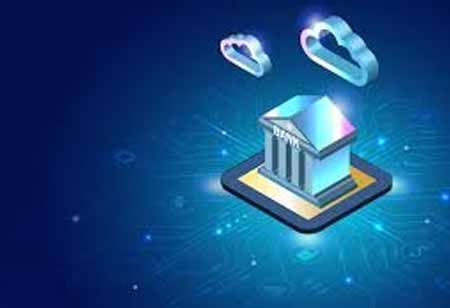THANK YOU FOR SUBSCRIBING

By
Banking CIO Outlook | Tuesday, December 09, 2025
Stay ahead of the industry with exclusive feature stories on the top companies, expert insights and the latest news delivered straight to your inbox. Subscribe today.
ATM outsourcing solutions have emerged as a transformative approach in the financial services sector, enabling banks and financial institutions to focus on core operations while enhancing customer service and operational efficiency. As consumer expectations evolve and cost optimization becomes a strategic priority, ATM outsourcing has become a preferred model globally, relevant in emerging and developed markets. The industry’s evolution is shaped by multiple driving factors, technological advancements, emerging applications, and a complex interplay of market challenges and their tailored solutions. It improves profitability for financial service providers and enhances access to banking in underserved regions, contributing to greater financial inclusion.
Retailers, utility companies, and government institutions benefit from ATM outsourcing. Third-party providers increasingly manage bill payment kiosks, subsidy disbursement terminals, and utility payment ATMs. The applications expand ATMs' role beyond traditional banking and enhance their relevance in the digital economy. The overall impact of ATM outsourcing is substantial. Financial institutions can grow their ATM networks without proportional increases in operational complexity. Outsourcing firms create employment opportunities, promote technological innovation, and contribute to the robustness of the banking infrastructure.
Tech Integration and Growth Drivers
Maintaining an ATM network involves significant capital investment, operational expenses, regulatory compliance, security risks, and regular upgrades. By outsourcing these functions, banks can significantly reduce their capital expenditure and shift from a fixed-cost to a variable-cost model, making operations more scalable. Consumers expect 24/7 ATM availability, multiple transaction capabilities, high-speed processing, and secure operations. Outsourcing partners bring specialized expertise and access to next-generation ATM technologies, which allow for consistent upgrades without burdening banks’ internal resources.
Many vendors now offer end-to-end services, site selection, installation, cash management, monitoring, maintenance, and compliance. The services are enhanced by integrating IoT devices, predictive maintenance algorithms, cloud-based monitoring, and remote diagnostic tools, ensuring high uptime and reduced operational risks. A significant tech trend is the deployment of intelligent ATMs capable of advanced functions such as biometric authentication, video banking, currency exchange, cardless withdrawals via QR codes or mobile apps, and integrated customer engagement features.
The ATMs enhance self-service capabilities, reduce branch footfall, and improve customer satisfaction. Outsourcing partners give banks insights into transaction patterns, downtime trends, user behavior, and fraud risks. The insights help optimize ATM placement, cash replenishment cycles, and preventive maintenance schedules, thus enhancing overall service quality. Third parties operate these ATMs and serve customers of multiple banks, extending ATM coverage and promoting financial access in remote regions. In many countries, regulatory support for such models is spurring further investment. By integrating green technologies and supporting electronic receipts, they contribute to environmentally conscious banking.
Market Impact and Strategic Advantages
The applications of ATM outsourcing extend across various financial institutions, from large multinational banks to small regional players and cooperative banks. Outsourcing helps banks reduce costs in metropolitan areas while maintaining a broad footprint. It also enables financial inclusion in rural and semi-urban zones by ensuring that banks can reach remote populations without needing physical branches. Outsourcing ATM operations translates into more efficient resource allocation. Instead of managing ATM networks' logistical and operational challenges, they can redirect efforts toward core competencies such as product development, customer relationship management, and digital transformation.
ATM outsourcing offers enhanced compliance and security. With ever-evolving regulations around customer data protection, transaction monitoring, and ATM security standards, banks value partnering with experts who stay updated with regulatory changes and implement proactive compliance mechanisms. Outsourcing providers' cybersecurity capabilities are typically more advanced, reducing the likelihood of fraud and breaches. Environmental sustainability is another emerging dimension. Outsourcing firms often deploy energy-efficient ATMs and optimize maintenance routes, reducing the ecological footprint.
Solutions and Future Market Outlook
The ATM outsourcing market faces notable challenges. One of the primary hurdles is the complexity of vendor management and service level monitoring. Banks must ensure that service providers maintain agreed-upon standards regarding uptime, cash availability, transaction speed, and customer support. For transparency, banks are adopting stringent Service Level Agreements (SLAs), comprehensive Key Performance Indicators (KPIs), and real-time dashboards. Technology platforms are being used to track ATM performance, uptime metrics, cash-out incidents, and user feedback.
Since ATM outsourcing involves third-party handling of sensitive customer data and cash, banks must ensure that partners follow strict security protocols and regulatory compliance. The risk of cyberattacks, data breaches, and fraudulent activities is ever-present. The solution involves adopting end-to-end encryption, real-time threat detection systems, and multi-factor authentication protocols. Regular audits, penetration testing, and employee training further fortify the security infrastructure. Market saturation in urban zones is another concern. With a high ATM density in cities, new installations offer limited incremental value.
Outsourcing providers are innovating multifunctional ATMs that serve several banking and non-banking functions, increasing customer engagement per terminal. Biometric verification, AI-driven personalization, voice-enabled interactions, and advanced analytics will redefine the ATM experience. Financial institutions that strategically invest in outsourcing partnerships will gain access to best-in-class infrastructure, stay ahead in compliance, and offer superior service levels.
THANK YOU FOR SUBSCRIBING
Be first to read the latest tech news, Industry Leader's Insights, and CIO interviews of medium and large enterprises exclusively from Banking CIO Outlook
I agree We use cookies on this website to enhance your user experience. By clicking any link on this page you are giving your consent for us to set cookies. More info



